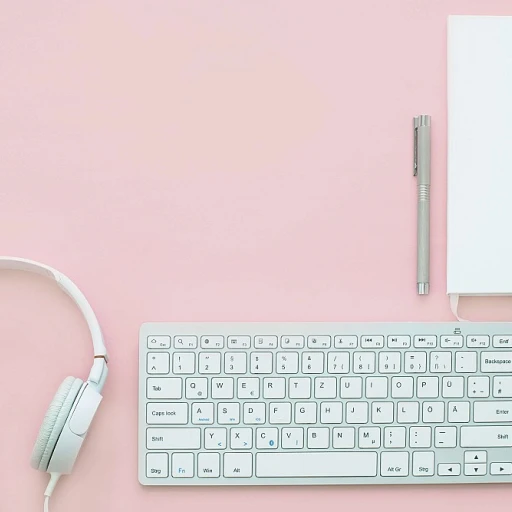
Understanding the fundamentals of logo design
Key Elements That Define a Strong Logo
Creating a powerful and lasting visual identity starts with understanding what makes a logo effective. A logo is more than just a graphic; it is the cornerstone of a brand’s identity, communicating values, personality, and professionalism at a glance. To achieve this, designers must focus on several foundational elements that contribute to both recognition and memorability.
- Simplicity: The most iconic logos are often the simplest. Clean lines and uncluttered shapes ensure that a logo is easily recognizable, even at small sizes or from a distance.
- Relevance: A logo must reflect the brand’s core message and industry. For example, a tech company might use geometric forms to convey innovation, while an organic food brand could opt for natural shapes and earthy colors.
- Versatility: Logos need to work across a variety of media, from business cards to billboards. This means they should be scalable and look good in black and white as well as color.
- Timelessness: Trends come and go, but a strong logo stands the test of time. Avoiding overly trendy elements helps ensure longevity and relevance.
- Memorability: A memorable logo sticks in the mind of the audience. Unique yet simple features help achieve this goal.
Understanding these fundamentals is essential before diving into the psychology of shapes and colors, or exploring the balance between creativity and clarity. For a deeper look at how creativity and strategy intersect in logo design, you can read more about key strategies for impactful branding.
By mastering these basics, designers set a solid foundation for building a visual identity that resonates and endures.
The psychology behind shapes and colors in logos
How Shapes Influence Brand Perception
Shapes are not just visual elements; they carry psychological weight in logo design. Circles often evoke feelings of unity and harmony, making them a popular choice for brands aiming to appear approachable. Squares and rectangles, on the other hand, suggest stability and reliability, which is why many financial institutions favor them. Triangles can communicate energy and innovation, but their sharpness might also signal caution if not balanced thoughtfully. Understanding these associations helps designers create logos that align with a brand’s values and audience expectations.
The Emotional Power of Color Choices
Color selection is a crucial step in building a strong visual identity. Each color triggers specific emotions and associations. For example, blue is commonly linked to trust and professionalism, making it a frequent pick for technology and healthcare brands. Red stands out for its ability to capture attention and convey excitement or urgency, while green is often used to represent growth and sustainability. It’s important to consider cultural differences as well, since color meanings can vary globally. A well-chosen color palette can make a logo instantly recognizable and memorable.
- Warm colors (red, orange, yellow) tend to energize and attract attention.
- Cool colors (blue, green, purple) evoke calmness and reliability.
- Neutral tones (black, white, gray) offer versatility and timelessness.
Combining Elements for Lasting Impact
The interplay between shapes and colors is where true identity emerges. A minimalist shape paired with a bold color can create a modern, memorable logo, while intricate forms with muted tones might suit brands seeking sophistication. Testing combinations and gathering feedback is essential to ensure the logo resonates with its intended audience and stands out in a crowded market.
For those exploring tools that support creative experimentation with shapes and colors, consider reading about superior alternatives to Paint for designers. These platforms can offer more flexibility and precision in the logo creation process.
Balancing creativity and clarity
Finding the Sweet Spot Between Innovation and Simplicity
When designing a logo, it’s tempting to push creative boundaries. However, the most effective logos achieve a careful balance: they are original enough to stand out, yet simple enough to be instantly recognizable. This balance is crucial for building a strong visual identity that endures over time.
- Clarity ensures recognition: A logo must communicate its message quickly. Overly complex designs can confuse viewers or lose impact when scaled down for digital or print applications.
- Creativity drives memorability: Unique elements help a logo stick in people’s minds. This could be a clever use of negative space, an unexpected color palette, or a distinctive shape.
Consider how your logo will function across various platforms. For example, a logo that looks great on a website might lose its clarity when printed on business cards or merchandise. Testing your design in different contexts helps ensure it remains effective everywhere.
It’s also important to remember that creativity doesn’t mean complexity. Some of the world’s most iconic logos are deceptively simple, relying on strong visual concepts rather than intricate details. This approach supports both brand recognition and adaptability.
For brands looking to amplify their visual identity online, the role of social media agencies in design is increasingly significant. These agencies help ensure that creative logos maintain clarity and impact across diverse digital channels.
Common mistakes to avoid in logo design
Frequent Pitfalls That Undermine Logo Impact
Designing a logo that stands out and endures is not just about creativity. It’s also about avoiding common mistakes that can weaken your visual identity. Here are some issues to watch for:- Overcomplicating the design: A logo should be simple enough to be recognized at a glance. Adding too many elements or intricate details can make it hard to reproduce, especially at smaller sizes. Simplicity helps your logo remain memorable and versatile across different media.
- Ignoring scalability: Your logo must look good on a business card and a billboard. Failing to test your design at various sizes can result in lost details or illegibility. Always check how your logo adapts to both digital and print formats.
- Neglecting color psychology: Colors evoke emotions and associations. Choosing colors that clash with your brand values or are hard to distinguish can confuse your audience. Make sure your color palette aligns with the message you want to convey and is accessible for all users.
- Following fleeting trends: While it’s tempting to use the latest design trends, logos should be timeless. Trend-driven designs can quickly look outdated, undermining the durability of your brand identity.
- Using generic symbols: Relying on overused icons or clipart can make your logo blend in rather than stand out. Aim for originality that reflects your unique brand story.
- Poor font choices: Typography is a crucial part of logo design. Fonts that are hard to read or don’t match your brand’s tone can dilute your message. Select typefaces that are legible and appropriate for your audience.
How to Ensure a Strong Visual Identity
- Test your logo in black and white to check for clarity and contrast.
- Gather feedback from diverse groups to spot potential misunderstandings or cultural missteps.
- Keep your {{ product_part }} consistent across all applications, reinforcing brand recognition.
Adapting logos for digital and print media
Ensuring Versatility Across Platforms
Designing a logo that stands the test of time means making sure it looks great everywhere. Whether it’s on a website, a business card, or a billboard, your logo must remain recognizable and effective. This adaptability is crucial for building a strong visual identity.
- Scalability: A logo should be designed in vector format. This ensures it can be resized without losing quality, which is essential for both digital and print applications.
- Color Variations: Prepare versions of your logo in full color, black and white, and grayscale. This flexibility allows your logo to work on various backgrounds and materials.
- Legibility: Avoid intricate details that might disappear or blur when the logo is reduced in size. Simple, bold shapes and clear typography help maintain clarity.
- File Formats: Save your logo in multiple formats (SVG, PNG, PDF, EPS) to ensure compatibility with different platforms and printing processes.
Testing in Real-World Scenarios
Before finalizing your logo, test it in different contexts. Place it on mockups of business cards, social media profiles, packaging, and promotional materials. This step helps you identify any issues with visibility or impact, ensuring your logo remains effective in every situation.
Consistency in Branding
Once your logo is ready, create clear guidelines for its use. Specify minimum sizes, color codes, and spacing rules. Consistent application across all touchpoints strengthens your brand’s identity and builds trust with your audience.
The iterative process: from concept to final logo
From Sketches to Final Files: Navigating the Logo Design Journey
The process of crafting a powerful and durable logo is rarely linear. It’s a journey marked by exploration, feedback, and refinement. Here’s how designers typically move from initial ideas to a finished product that stands the test of time.- Initial Conceptualization: Start by gathering insights from earlier research—understanding the brand’s values, target audience, and competitors. Sketch multiple ideas, focusing on how each concept aligns with the brand’s identity.
- Digital Drafts: Move promising sketches into digital format. Use vector-based software to ensure scalability and precision. At this stage, experiment with different shapes, colors, and typography, keeping in mind the psychological impact discussed previously.
- Feedback and Iteration: Share drafts with stakeholders or test groups. Constructive feedback is crucial. Sometimes, what works on paper doesn’t translate well digitally or across different media. Be prepared to revise and refine.
- Testing for Versatility: Check how the logo performs in various contexts, such as on screens, print materials, and merchandise. Make sure it remains legible and impactful at different sizes and in monochrome.
- Finalization and Delivery: Once the logo meets all criteria for clarity, creativity, and adaptability, prepare the final files. Deliver multiple formats (AI, EPS, PNG, SVG) to ensure the logo is ready for any application.









